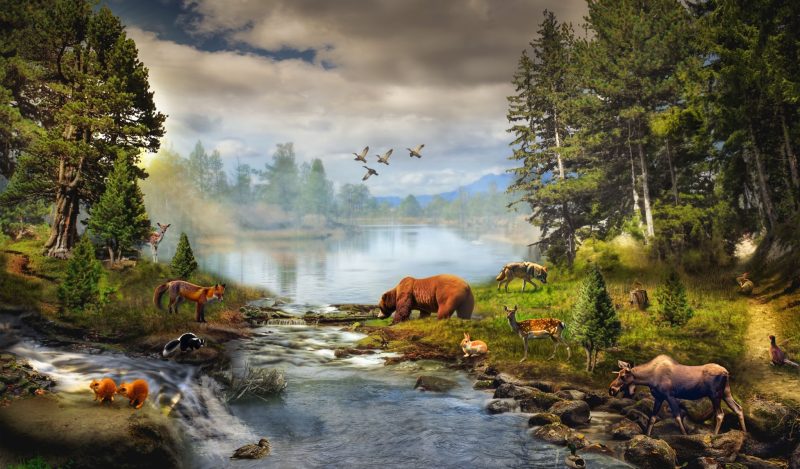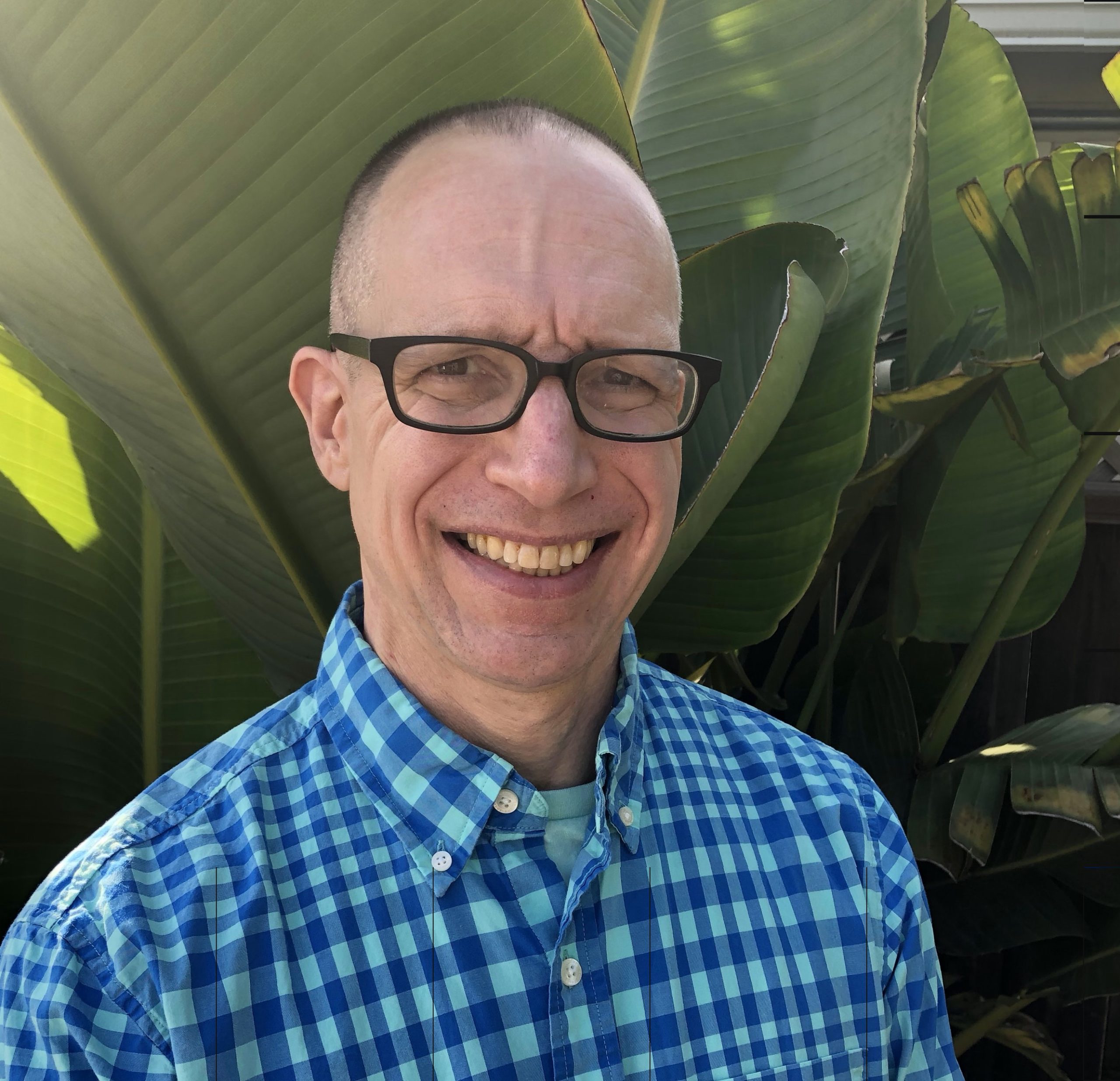Lierre Keith’s book The Vegetarian Myth: Food, Justice, and Sustainability describes her failed pursuit of a pure vegan diet. Published in 2009, Keith’s story parallels our recent Covid panic. Both veganism and Covidism are echoes of the ancient Greek philosophy of Hermeticism, “a dualistic faith that portrays the body of men and their interactions with the material world as being antagonistic to the soul.”
Both ideologies locate our interactions with the animal world as the root of corruption. Veganism aims to isolate us from causing the death of animals; while Covidism aims to isolate us from microbial life forms that may cause our death. Both of these ideologies failed, in similar, but different ways. From their failure we can learn some truths about our relationship with animal life.
Veganism
The vegan diet aims for a human life without causing harm to animals. The vegan avoids all animal-derived products, not only the obvious ones, such as meat, fish, dairy, and eggs, but also honey, gelatin, yeasted breads, and certain vitamin supplements. Vegans may also shun animal derived products such as leather and bone.
Keith is “an American writer, radical feminist, food activist, and environmentalist.” Her book takes us on her journey through veganism and back. Her attraction to veganism was through a moral vision. But, after running up against a series of hard walls, she abandoned her quest, and adopted an omnivorous diet.
Post-deconversion, she recounts a conversation with an unredacted vegan. She recognized in him the animating spirit of her former vegan self. In the young man, she saw the belief that “There’s a way out of death and I’ve found it.” (p. 25). Keith writes:
My life as a vegan was so simple. I believed that death was wrong and could be avoided by shunning animal products. My moral certainty took a number of hits over those twenty years, especially as I began to grow my own food. (p 81)
She lays out a series of failures of her attempts to find food that did not exploit animals. With each failure, her steadfast adherence to ethical principles conflicting with the unyielding quality of reality forced her into increasingly bizarre accommodations. A few of those will be described here.
It turns out that plants, to thrive, require food of their own. Limiting your diet to plants might not be enough because the farmer may have used animal-derived fertilizer. In order to provide herself with strict “no death involved” vegetables, Keith decided that she must take control of her own food supply chain. She decided to raise a garden. To her dismay, Keith discovered that commercial fertilizer contains “blood meal, bone meal, dead animals, dried and ground.”
What about manure? A byproduct of animals, manure inherently requires some degree of animal husbandry. But could manure be collected with only a moderate amount of animal exploitation that stopped short of killing the animal? It turns out, no. Goat manure, in quantity, can only be obtained from a goat dairy. The dairy is viable as a business only because its customers eat cheese – a food forbidden to vegans.
But let’s ignore that for the moment because it’s other people who eat the cheese, and, milking a goat does not harm the goat. Keith wrestled with the uncomfortable reality that the dairy farming industry necessitates the death of goats because more female than male goats are needed. Females produce the product, while males only contribute to the reproduction of the herd. Even excess females above the numbers needed to maintain the dairy’s herd size are not needed. What happens to the excess goats? They become someone’s barbecue, or perhaps a curry.
Fertilizer was not the only part of gardening that put Keith in a collision course with animal death. She soon realized that many tiny animals wanted to eat her plants.
I was locked in mortal combat with the slugs. In dry years, they damaged the garden. In rainy years, they devastated it. I’d plant starts that were eaten to the ground twenty-four hours later. Poison was out of the question. It would kill and keep on killing the million and one microbes I was trying to encourage, the birds, the reptiles, bioaccumulating up the food chain, spreading another shadow of cancer and genetic damage across a darkening planet. (p. 58)
Her next effort was “an organic solution: diatomaceous earth.” Yet every road she took wound up in a cul-de-sac of animal death.
It worked. In two days the garden was slug-free and the lettuce was mine. Then I found out how it worked. Diatomaceous earth is the ancient bodies of small, prehistoric critters ground into powder. Each grain of powder has tiny, sharp edges. It kills by mechanical action. Soft-bellied animals like slugs crawl across it and it slices a million cuts into their skin. They die from slow dehydration. (p. 58)
Another option was to introduce a predatory species to eat the slugs. This meant using, owning, and exploiting animal labor. More compromise with principle; and more killing:
I’ll never forget the first day I brought Miracle, my little duck, into the garden with me. I didn’t have to teach her. She knew. One bite of bug and she exploded into quacks of joy: this is what I was born for! The slugs were history. And I wasn’t killing. Neither was Eichmann, whispered the Vegan Voice of Truth. Was this a death camp for animals, the furred, feathered, exoskeletoned? But everything seemed so peaceful. The birds were so obviously happy, looking for bugs. Sure, and Arbeit Macht Frei. All Eichmann did was arrange the transportation. Isn’t that what you’ve done? (p. 61)
After a lengthy search for A World Without Death, Keith realized that plants, animals, carnivores, and herbivores are all part of a larger system in which they eat each other:
The lesson here is obvious, though it is profound enough to inspire a religion: we need to be eaten as much as we need to eat. The grazers need their daily cellulose, but the grass also needs the animals. It needs the manure, with its nitrogen, minerals, and bacteria; it needs the mechanical check of grazing activity; and it needs the resources stored in animal bodies and freed up by degraders when animals die. The grass and the grazers need each other as much as predators and prey. These are not one-way relationships, not arrangements of dominance and subordination. We aren’t exploiting each other by eating. We are only taking turns. (p.14)
Keith ultimately underwent a revolution in her understanding of the spirituality of humans, animals, and plants. The whole system works because the different life forms all feed off each other. Ruminants eat grass. Maintaining the proper mix of plants requires the herbivores grazing the leafy parts of the plants. And then, soil microbes digest the plants, with help from the waste products of the animals.
Without ruminants, the plant matter will pile up, reducing growth, and begin killing the plants. The bare earth is now exposed to wind, sun, and rain, the minerals leach away, and the soil structure is destroyed. In our attempt to save animals, we’ve killed everything. (p.14)
She accepted that life cannot sustain itself without causing death. Animals eat animals; animals eat plants; planets eat dead animals in order to transform soil into food for new plants, and in turn become food for animals. As she explained to an unreconstructed vegan years later, “Plants have to eat, too,” (p.25) And plants are not vegan: “My garden wanted to eat animals, even if I didn’t.” (p. 24)
She reconciled herself to living in this world, with both life and death, because that is the only world that exists. And therefore the only world in which she could act. Keith relates a conversation with her partner who helped her to understand the deal that we must make: to accomplish anything of value, “in exchange, I had to accept death.” (p. 63)
Post-conversion, Keith tells of reading a vegan forum on the internet.
A vegan flushed out his idea to keep animals from being killed—not by humans, but by other animals. Someone should build a fence down the middle of the Serengeti, and divide the predators from the prey. Killing is wrong and no animals should ever have to die, so the big cats and wild canines would go on one side, while the wildebeests and zebras would live on the other. He knew the carnivores would be okay because they didn’t need to be carnivores. (p.13)
I knew enough to know that this was insane. But no one else on the message board could see anything wrong with the scheme.
Reflecting on her post-vegan outlook, Keith wrote “I used ideology like a sledgehammer and I thought I could bend the world to my demands. I couldn’t..” When faced with the impossibility of veganism, Lierre Keith began to rethink her assumptions. The end of that process was a complete revolution in her outlook on humans, animals, and plants. My interpretation of Keith’s story is that she was at war with reality. The choices were to lose the war or her own sanity. The same choice faced us in the Covid panic, which I will cover in the next section.
The Covid Panic
The reader probably knows a germophobe or two. Germophobia is a garden-variety neurosis that manifests in odd behaviors and a quirky obsession with cleanliness. It mainly impacts the lives of the affected individuals. Covidism is an advanced form of germophobia that arose out of the obsession with the SARS-CoV-2 virus. It is a totalizing ideology that inflicted a French-revolutionary level of terror on all of society. My discussion of Covidism will draw from Dr. Steve Templeton’s Brownstone (2023) publication Fear of a Microbial Planet: How a Germophobic Safety Culture Makes Us Less Safe.
We live, as Dr. Templeton explains, in a dense cloud of small life forms:
Germophobes…live in denial because microbes are everywhere, and they cannot be avoided. There are an estimated 6×10^30 bacterial cells on Earth at any given time. By any standard, this is a huge amount of biomass, second only to plants, and exceeding that of all animals by more than 30-fold.
Microbes make up to 90% of the ocean’s biomass, with 10^30 cells, equivalent to the weight of 240 billion African elephants. The very air you breathe contains a significant amount of organic particulate matter that includes over 1,800 species of bacteria and hundreds of species of fungi airborne in the form of spores and hyphal fragments. Some microbes can stay airborne for days to weeks, usually by hitching a ride on dust or soil particles.
The sheer density in the air we breathe means we inhale thousands of microbial particles for every hour spent outdoors. Going inside isn’t much different, as indoor air is generally associated with the immediate outdoor environment, with differences due to ventilation and occupancy. It’s almost impossible to find any place, indoor or outdoor, that is completely sterile, although some places are dirtier than others. (p. 19)
The numbers are so large that they are hard to make sense of. Some comparisons give a better idea of the magnitude of small things that we breathe in:
There are enough viruses on Earth to make any germophobe’s head explode just trying to wrap their mind around it. There are an estimated 10^31 viruses on planet Earth. That number by itself is so incomprehensibly huge that it doesn’t help to even cite it. So how about this: if you laid all of the viruses on Earth end to end, you would create a string 100 million light-years across. The number of viruses is more than 10 million times all of the stars in the universe. Even though viruses are microscopically tiny in comparison to humans, their total biomass is four times that of all humans on Earth. The Earth is practically bursting with viruses.
…
If you randomly tested a liter of seawater you would find it contains up to one hundred billion viruses, mostly bacteriophages, with the weight of all the ocean’s viruses equivalent to seventy-five million blue whales.The rate of viral infections in the oceans is around 10^23 each day, killing 20-40 percent of all the ocean’s bacteria daily. Scientists studying viruses in soils found a similar composition, with billions per gram of dry weight. The most viral-rich soils, including forest soils, were also the highest in organic matter. However, even seemingly lifeless dry Antarctic soils contained hundreds of millions of viruses per gram. (p. 59-60)
Like germophobia, Covidism adheres to a simple-minded “the only good microbe is a dead microbe” outlook. Yet in reality, the relationship between humans and microbes is nuanced and multifaceted. Aren’t those bacteria and viruses nasty little things that are trying to kill us? Well, some of them are, but some of them originated from inside of us and help us digest our food.
The good news for germophobes is that most viruses only infect and kill bacteria, in a kind of intergerm warfare. These viruses are called bacteriophages (or sometimes, just ‘phages’), and since their hosts can be found everywhere, from tropical rain forests to dry valleys to deep ocean trenches to our own bodies, phages can also be found everywhere. (p. 58)
And
All that bacteria in the lake and pool doesn’t just naturally live and multiply in the water. A significant amount originated in animals, including humans. We harbor trillions of bacteria on our skin, in our mouth, and in our guts. The pool doesn’t have microbes in it because the chemical treatments didn’t work, it has microbes in it because it has people in it. We are literally germ factories. It is all over us, inside us, and on everything we touch. (p. 20)
Humans as Microbial Bioreactors
Our bodies are colonized by so many microbes that our cells (about 10 trillion total) are outnumbered by our microbial inhabitants by a factor of ten (about 100 trillion total). (p. 21)
Some viruses are paying us rent by assisting us with the process of being alive:
Fears of antimicrobial resistance are still in line with the old, implicit myth that the most important thing to know about bacteria is how to kill them. However, what is becoming increasingly accepted is that antibiotics also disrupt our established relationship with our microbial residents, allowing potentially unsavory invaders to colonize our bodies and disrupt important pathways that help maintain our overall health. (p. 40)
Attempting to get rid of one microbe will often have unintended effects on other microbes, something we’ve gotten much better at due to improved sanitation, antibiotics, and “hygiene.” It is also likely that avoiding some infections entirely (like cold viruses) might also have unintended consequences, (p. 42)
To be sure, no one wants to get sick. But there is also some truth in the aphorism Out of life’s school of war, what doesn’t kill you makes you stronger. Even the harmful microbes drive adaptations in our bodies that have long-term benefits. When you fight off an infection, you develop immunity. The more infections, the more developed your immunity:
As most parents know from experience, the first few months of their first child’s entry into daycare results in a surge of viral illnesses in the family. My wife came home with our first child from daycare one day, and told me a story about observing some other toddlers in the room. One dropped her pacifier, and another right behind her picked it up and popped it right in his mouth. No matter how hard daycare workers might try, hygiene just isn’t gonna to be on the toddlers’ minds. As a result of these exposures, most families with one child spend about a third of the year fighting off a viral infection, and people with two children may spend more than half the year with some type of infection.
Sounds awful, doesn’t it? But the good news is, most of us have an amazing and robust immune system, and after a time we become immune to many common viruses our cute little germ factories bring home. I know a family with nine kids, and they don’t seem like they ever get sick. That’s likely because they’ve had everything already, and have developed strong long-lasting immune responses that protect them from illness from the most common viruses. (p. 62)
The strict avoidance of microbes in childhood makes you less well prepared for adulthood. The “hygiene hypothesis” posits that we make a down payment in our early years, and then realize the returns through improved health later in life. Dr Templeton explains “exposure to microbes in early life reduces the possibility of getting asthma later.” (Templeton, p. 42). This protective effect may be due to immunity, or perhaps other, less well-understood interactions between micro and macro worlds.
The same principle can be seen in the reversal of a previously held position by American Academy of Pediatrics regarding peanuts. Formerly they advised avoidance until age three. They are now saying that there is evidence “that early introduction of peanuts may prevent peanut allergy.” Mercola cites a series of studies showing the same effect. Yes, a peanut is not a microbe, but perhaps similar mechanisms are at work.
The apex of Covidism was the “zero-Covid” movement. This cult sought to organize society around a single-minded pursuit: total eradication of a single cold virus. What’s wrong with that? It is another impossibility. Viruses have more places to hide than inside of us.
Animal reservoirs are pools that originate in humans and then accumulate in other animal species. The animals may be capable of hosting the virus without being susceptible to the Covid illness. Reservoirs may have been one reason for the failure of lockdowns to contain or eradicate Covid. The virus would vacation in the other members of the animal kingdom until we emerged from our lairs, and then, the spread would pick back up where it had left off. If the best we can do is to “slow the spread” then we only delay the inevitable.
What about slowing the spread by improving air quality? In “A Fantasy of Virus-Free Air” (p. 337), Dr. Templeton goes over the pros and cons of improving building air quality. Buildings can function as a semi-closed system by filtering both external and internal air. Because cabin air is filtered every few minutes, commercial airlines were not a site of Covid transmission (p. 338).
Yes, filtration will reduce the spread of respiratory viruses. And stopping transmission is, to a degree, a good thing. But is “stopping the spread” an unmitigated good? Does filtration stop the spread or only slow it? What are the trade-offs? From Fear of a Microbial Planet:
The subsequent rise of polio epidemics…with improved sanitation suggests that just because an advance in public health has immediate and obvious benefits, doesn’t mean there won’t be a cost that is neither immediate nor obvious…
This is also true of indoor environments—the “cleaner” the indoor environment that children are exposed to, the more likely they are to develop chronic inflammatory diseases later in life. This has been demonstrated in a number of studies comparing geographically and genetically similar populations with different home environments. Children reared in environments that expose them to a variety of bacteria appear to have immune systems that are “educated” to tolerate those bacteria and other biological microparticles, while those in “clean” environments have immune systems that could be described as “ignorant” and thus more likely to overreact. (p. 342)
Conclusions
What can we learn about this from Keith that applies to Covid?
The first parallel is the impossibility of separating life from death. We are a part of the world, not separate from it. We participate in life, and in death. We cannot cut ourselves off from death without cutting ourselves off from life as well.
As life and death are intertwined through the food cycle, macroscopic and microscopic life forms live in a nuanced balance of hosting, feeding, and preying on each other. We cannot organize life and death so that we have one without the other. Veganism tries to halt the species in different parts of the food cycle using each other as food. Were it to succeed, all life would stop. Covidism did not eradicate the Covid virus; it only prolonged the eventual end of the most severe illnesses, as the virus evolved away from the developing herd immunity.
The second point: “one-thing” thinking does not work for complex systems. Complex systems are characterized by interdependent parts. It is not possible to change Just One Thing. The motive for changing the One Bad Thing is to achieve an obvious, direct and intended effect. In a complex system, effects ripple through a web of downstream interactions. Far-reaching consequences often act in the direction opposite the original change. Indirect effects are more difficult to predict, and often are not connected in an obvious way to the initial change. These indirect effects may happen much later, even years, in the future.
When Keith tried to eliminate one source of death, she either destroyed her ability to produce food, or relied on another indirect form of harm to animals. The Governor of New York justified the shutdown of society “if it saves one life.” Not only did the lockdowns cause massive damage to public health, they prevented people from producing in the economic realm. The wealth resulting from production is one of our main sources of security, in all realms.
Was the Covidism reign of terror a good idea gone too far? An example of the external truth that “Extremism in the defense of liberty is no vice?” Not so much. It was a war against reality. Like all wars, it was destructive at a massive scale. Defeat is certain; and among the many costs of war, the loser is inflicted with insanity.
Wherever Keith attempted to produce food without death, she came up hard against the realities of soil, biology, and plant life. Covid derangements included police arresting surfers, wind players in high school bands rehearsing in large plastic bubbles, and children forced to sit alone in playgrounds. The Bolshevik revolutionary episode we experienced with Covid lockdowns failed to stop the microbe; however, it did succeed in destroying many lives.
Hermetic purification requires “a candidate separating themselves from the world before they rid themselves of material vices.” Because our nature is to be embedded in the animal world, the attempt at separation is bound to fail. Separation does not result in lesser evil. Rather, many even more profound evils are unleashed in the process.
Published under a Creative Commons Attribution 4.0 International License
For reprints, please set the canonical link back to the original Brownstone Institute Article and Author.



